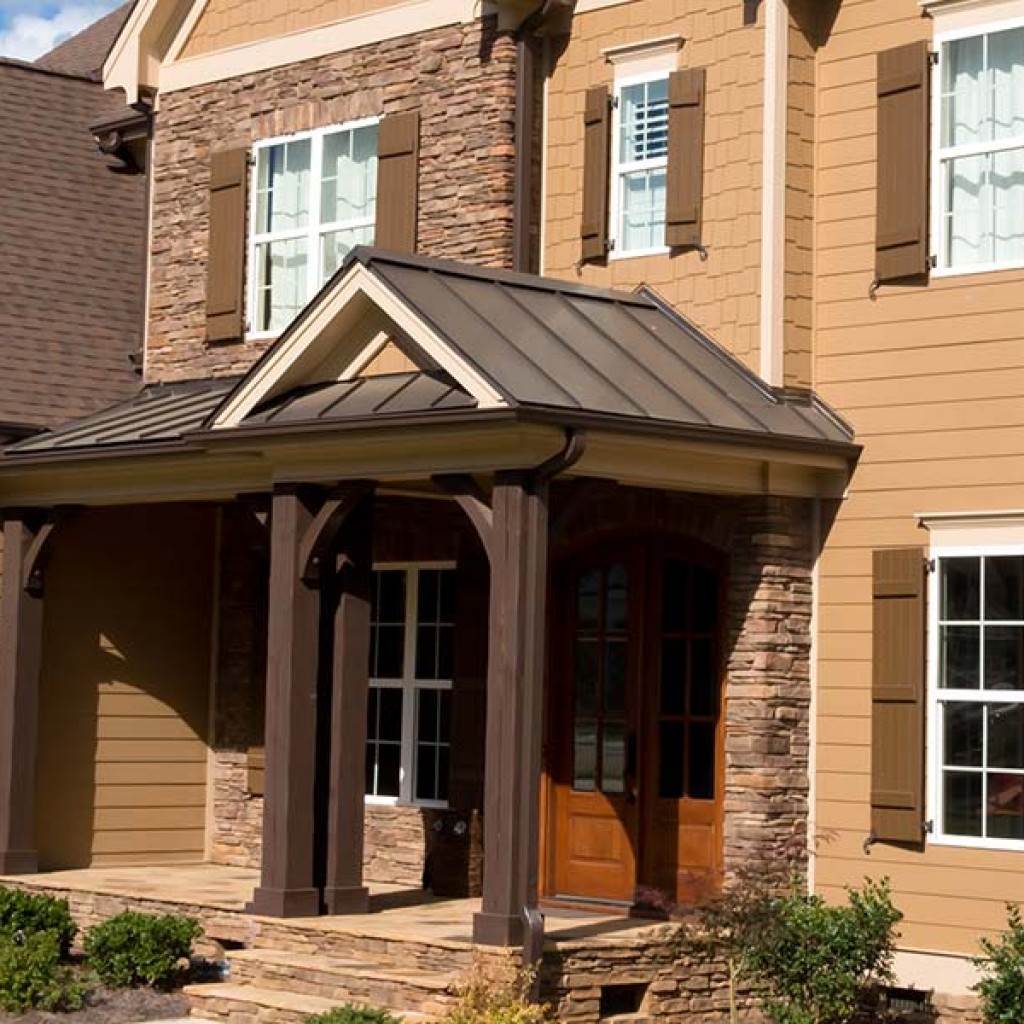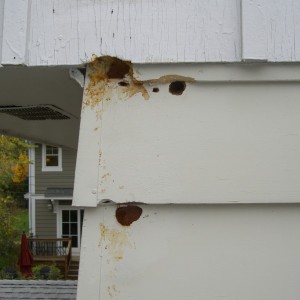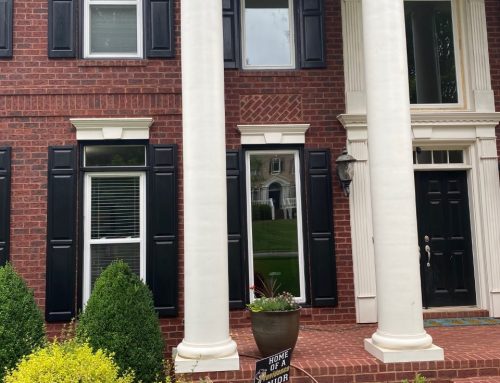Spring is the season when critters and insects begin to come out of the woodwork ( literally) and wreak havoc on our home’s exterior. It brings to mind the scene in the “Wizard of Oz” when Dorothy is in the forest and fears the possibility of encountering “Lions, and Tigers and Bears — Oh My!” Inspecting your home’s exterior during the first days of spring leaves many homeowners discovering damage caused by woodpeckers, squirrels, and bees — Oh my. Here is an in-depth look at how and why these critters cause damage to your home’s exterior:
- Carpenter Bees – the winged menace to your home’s exterior
Wood boring carpenter bees resemble bumble bees but these large bees excavate tunnels in wood to make a nest whereas bumble bees nest in soil. This nest-building can damage wood trim, doors, and exterior wood surfaces such as fascia and siding. The tunnels are constructed by the female bee and may be re-used year after year, and extended each year. This tunneling eventually weakens the wood and entrance holes will allow penetration of water and cause wood to rot.
There are precautions that will hinder the progress and damage of wood-boring insects such as carpenter bees, however the only permanent solution to the ongoing problem is to install siding and trim which makes it difficult, or impossible, for the insect to penetrate.
- The wrath of the woodpecker
Here in North Carolina, there are at least eight species of woodpecker who thrive. Woodpeckers are quite beautiful and majestic to see in your backyard, however, the damage they can inflict on your home’s exterior is not so beautiful. The familiar woodpecker knock sounds painful but woodpeckers’ brains are actually cushioned by an air sac that prevents them from giving themselves a concussion every time they try to eat. They also all have specialized tongues. This feature helps them grasp prey deep inside holes drilled into the sides of dead trees, lick sap from oozing holes and penetrate rotting logs.
Woodpeckers inflict damage onto surfaces for a number of reasons. One of which is what is referred to as “drumming.” Drumming is believed to serve as a territorial signal similar to a distinct bird’s song and it may also serve to attract a mate. Both sexes are known to drum. Another source of damage is caused by roosting and nesting holes. These are most often begun in houses that are in close proximity to wooded areas, have natural wood or dark-colored stain. When beginning to drill nesting or roosting holes, woodpeckers often make several attempts,
beginning an excavation only to leave off and start a new one just inches away from the first, or sometimes in an entirely new location on your house. This may be because the specific requirements needed for
a nesting site or roosting site are not met, and it is in this way that a house may accumulate
multiple holes. Foraging holes are another source for concern. This is considered double trouble for the homeowner who has woodpeckers foraging holes in order to reach the insects that have penetrated and damaged the home’s exterior already.
Homes with quality vinyl or cement fiber cement siding are not prone to woodpecker damage. However, if the fascia boards of your house are made of wood, they may sustain damage from woodpeckers drumming on the wood in which case there will be very small holes in clusters at specific points on the fascia boards. The fascia boards may also become infested with carpenter bees as well.
- Those cute squirrels can cause damage too
Squirrel damage to homes can be costly. Like many rodents, a squirrel’s front teeth continue to grow throughout their entire lives. To keep them trimmed to a proper length squirrels chew on stuff. A major problem arises when squirrels don’t have “stuff to chew” available to them. A squirrel’s normal method for teeth trimming includes chewing on acorns, walnuts or other hard coated seeds gathered from trees. If these are not available they will instead chew on your house, property or anything else to keep their teeth trimmed. They might chew on your wood siding, roofing shingles, doors, patio furniture, plastic yard lights, non-metal parts on parked cars in your driveway — you name it.
Here at Belk Builders we have seen our fair share of damage inflicted by our feathered and furry friends, nuisance insects and other animals over the years. We specialize in providing the highest quality vinyl siding and trim to our customers to help minimize possible damage inflicted to your home’s exterior. In addition we are the Charlotte area’s premier HardiePlank siding installer. James Hardie Fiber Cement Siding withstands termites, carpenter ants, carpenter bees and woodpeckers ensuring your home’s exterior remains damage free.
Contact Belk Builders for a free consultation and learn more about making your home “critter-proof” through the use of our quality line of exterior siding, window and roofing materials and expert installation.
(704) 400-4710 or visit our website today!




